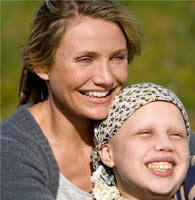Narrative conventions-
-Traumatic event/s, life struggles, crime, alcoholism etc. These issues provide the 'drama' by provoking emotion and in essence telling someones story, allowing the audience to empathise. Used in 'Fish Tank', 'Changeling'
-The narrative often contains elements that will upset and disturb, such as details of crime, abuse or poverty or medical illness. All of which can cause controversy as they may be uncomfortable to watch and are typically taboo subjects. Used in films such as 'My Sisters Keeper', 'The Lovely Bones' and 'Fish Tank'
- Main character is often well developed, has a real sense of depth and depicts a broad range of emotion, so the audience really get to know this person and therefore feel effected by what happens to them. The lead character can often be innovative or investigative depending on the narrative. Used in 'Changeling' and 'The Lovely Bones' etc
- Relationships between characters are often well developed, whether in a positive or negative way so they have some real connection to the people around them, therefore giving their own character a real background and sense of heritage. Used in 'About a Girl', 'My Sisters Keeper' and 'The Lovely Bones'.


Mise-en-scene conventions -
- Mise-en-scene relates very carefully to the location and the characters, i.e. if set in a home, the mise-en-scene will be personal objects relating to that character or if set in an outside location, the area the character is in will show signs of their culture or have reference to them. Used in 'My Sisters Keeper'
- Costume is kept simplistic yet personalised, the character will be wearing everyday simple clothing yet that matches their personality or culture, such as tracksuit bottoms or a cardigan. This allows the character to be expressive, without being extroverted or extreme. Used in 'Fish Tank'
- The lighting tends to go from extremities, gloomy and foreboding in moments of sadness and grief, to bright, clean artificial in moments of confusion almost a sci-fi affect and to gentle and warming in moments of joy, allowing the audience to see the mood that is being created, and provoke a stronger reaction from them. Used in 'Changeling'
Cinematography conventions -
- Two shots/ group shots are often used to allow the audience to see the relationship between the characters, and how they play off one another for example the sharing of bad news. By being able to see the relationship between the characters, the audience will have a lot more provoked emotion, because it can be used to make latter events seem even more tragic, for example the relationship between a parent and child can be used to make a tragic accident seem much more unnecessary and distressing. Used in 'The Lovely Bones', 'Moulin Rogue' and 'Titanic'.
- Close-up shots are used to portray strong emotion from the characters, distress, pure anguish or someone who is completely distraught. Quite uncomfortable for the audience to see. Used in 'Changeling' and 'The Boy In the Stripped Pyjamas'
- Panning, this can be used to enhance the emotion created by the actor, for example panning side to side swiftly can suggest frantic, desperation etc. Used in 'Changling'


Editing conventions -
- Continuity editing, used in most dramas because the narrative is so important, so its usually kept as simple and basic as possible to keep attention on the action and create a stronger sense of realism, which in turn makes it much more emotive for the audience because its so realistic. This editing can also create the effect of the audience being an extra character, again making them more involved and affected by the film. Used in 'Fish Tank', 'Changeling'
- Cuts on dialogue, used to create the sense of realism as it follows the natural flow of the conversation, making the audience feel involved. The dialogue is very important within a drama because it often progresses the narrative, so the audience attention is solely on this and they concentrate more on what is being said through involvement and simplicity. Used in all of the above dramas I have mentioned.

No comments:
Post a Comment